Quick Links
There are a lot of link building myths and misconceptions floating around and today we want to clear up some common confusion!
When you understand these common myths, you’ll have a ton more success in any link building you do.
Just imagine: With the right link building strategy, your website will climb up the results to page 1.
Let’s get into it!
Myth #1: “I’ll build a few links and see how it goes.”
Going too slow with link building is a common problem.
The real issue isn’t necessarily the slow nature of building links, but with the misalignment of how many links it’s actually going to take to rank on page one.
You need to figure out the realistic number of backlinks by analyzing how many links your competitors have that are ranking on page 1.
We use SEMrush Keyword Overview for competitor research on this.
Let’s take a look at an example:
Say you want to rank for “Callaway golf clubs” – a keyword that gets about 12K searches a month with a CPC of ~$0.34.
Looking at SEMrush, the top ranking results for this keyword have between 47 – 1,600 backlinks.

Since Google is ranking content with this range of links, you’ll most likely need to fall somewhere around this range as well when trying to rank for this keyword.
Here’s some scary math: let’s say the average number of backlinks was 100, and you did 1 link/month, you would need 100 months, or over 8 years to rank your content for that keyword.
Even if it was a lower number of links, like 12, that means it would take a full year for you to reach that number at 1 link per month.
You can get a better picture of how many backlinks on average you’d need to rank by looking at how many links the results on page 1 of Google have.
This allows you to set some real goals to follow through on.
If you want to rank in 3 months: divide the average number of links for results on page 1 by 3 to get a more realistic view of how many links it would take and how much it might cost.
When it comes to getting the “right” number of links to your site, looking at your competition’s stats is one of the best ways to get a ballpark figure to shoot for!
Side note – as you get up to the top, your position depends on more factors than links alone. If your rankings aren’t improving try these things.
Myth #2 “If I build links too fast I’ll get penalized”
The prospect of building links too fast and getting penalized by Google is another common concern.
However getting a large quantity of links is something that happens regularly online, and it’s not necessarily bad:
Content that goes viral naturally attracts links quickly.
For example, authoritative content that answers a question such as “The best golf clubs in 2020?” naturally attracts a lot of links very quickly because it’s so useful, and in this case timely.
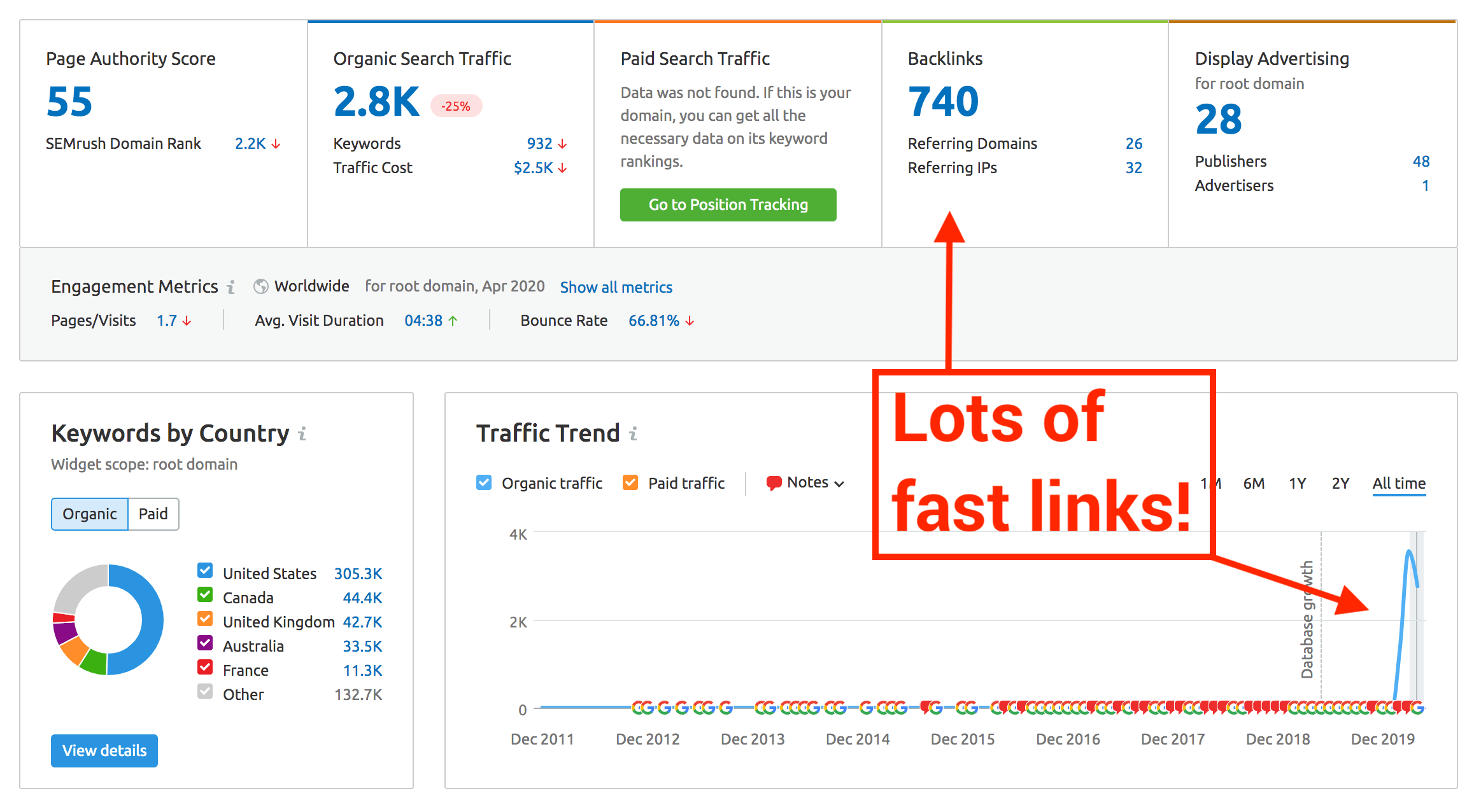
This particular article got almost 200 backlinks in just 7 days.
As a result of its great performance in such a short period, it ranks very well for the phrase “The best golf clubs in 2020.”
This article has also amassed more than an estimated 2.8k in organic traffic:

This is a common scenario for news content, authority pieces, or viral articles – They attract lots of links very quickly, and not only do they NOT get penalized, they actually rank really well.
Other content such as research pieces also generate lots of links because they serve as references for other content to link back to.
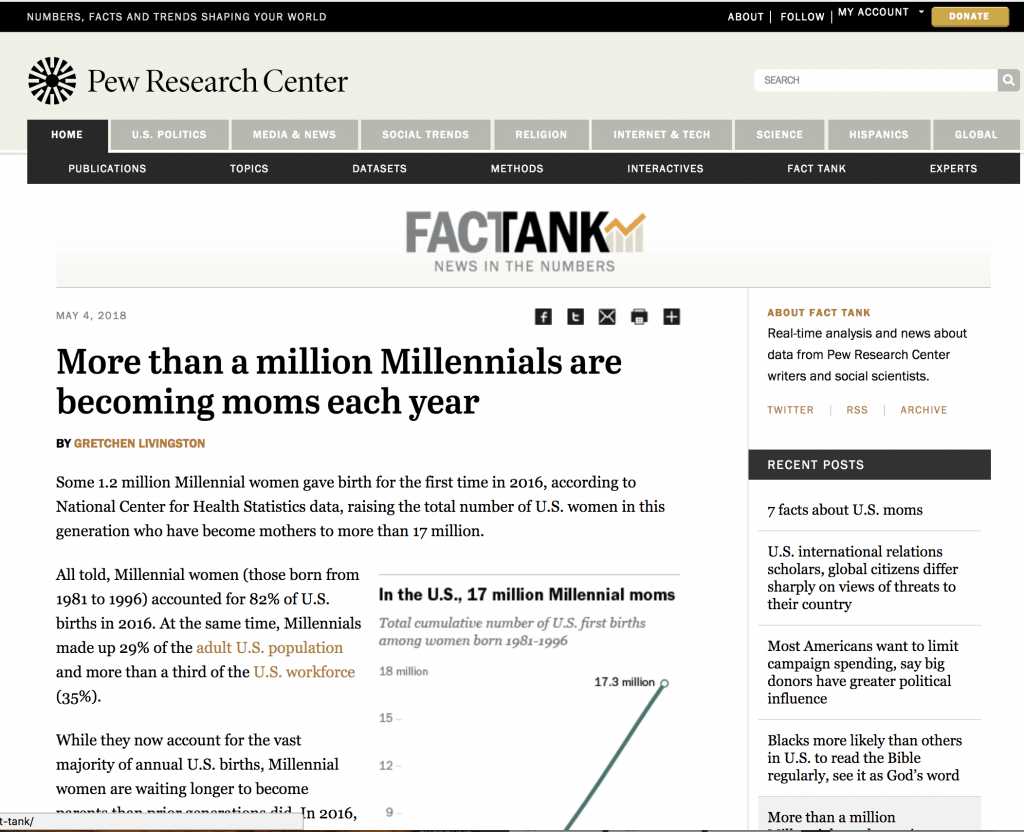
This research article got nearly 150 referring domains and 700 backlinks in the first week.
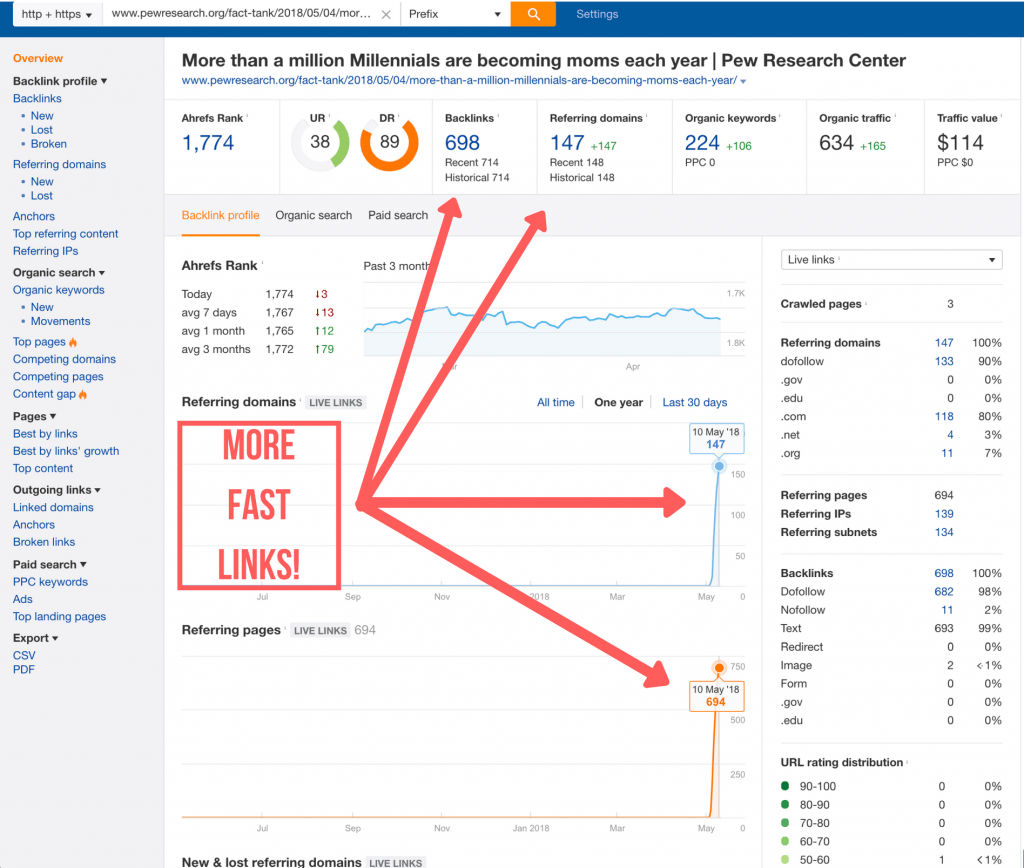
As a result, it’s ranking on page 1 of the SERPs for multiple terms:
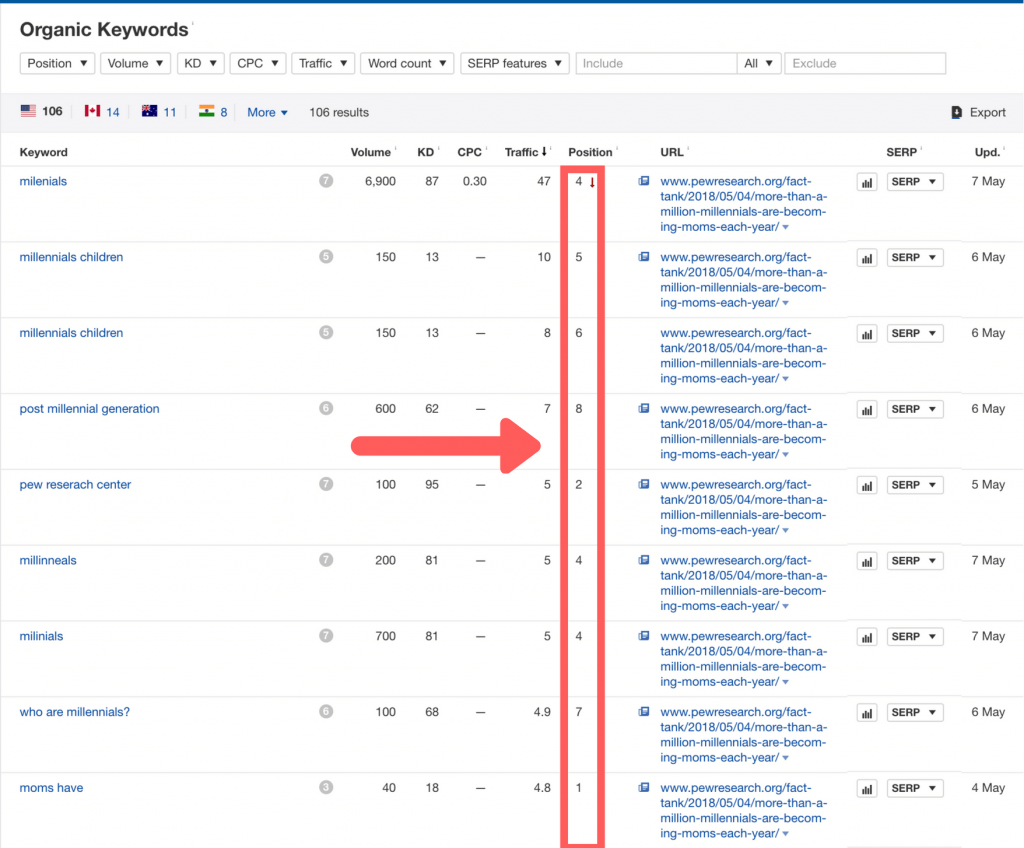
Having fast link velocity isn’t necessarily bad, and in these cases, attracting lots of quality links quickly resulted in some great rankings.
Myth #3 “If a link comes from a site that’s not exactly my niche I’ll get penalized.”
There are a lot of misconceptions out there regarding link relevancy.
The biggest misconception here is that any link that points to you MUST be from a domain that matches your industry or niche market.
For example, if you are a “swimming pool store,” you should only get links from “swimming pool stores” or very closely related websites.
Now, it’s not that you shouldn’t get relevant links, but good link building is more about context.
Let’s look at an example:
The Ketogenic Diet is all the rage these days – The term “ketogenic diet” get 293K searches per month with a ~$1.00 CPC. This is a very popular and competitive term.
Now looking at the results this website (ruled.me) is ranking #1.
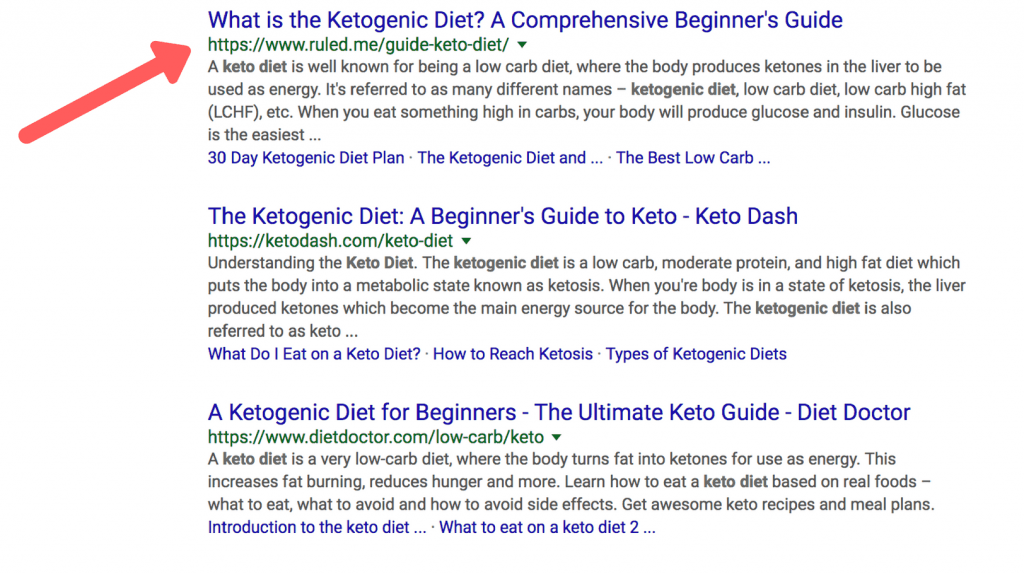
Looking at this site’s backlink profile, you’d think that all of the referring links should also be related to the keto diet, right?
A closer look at some the sites referring to this one reveals some unexpected, non-keto niches linking to it:
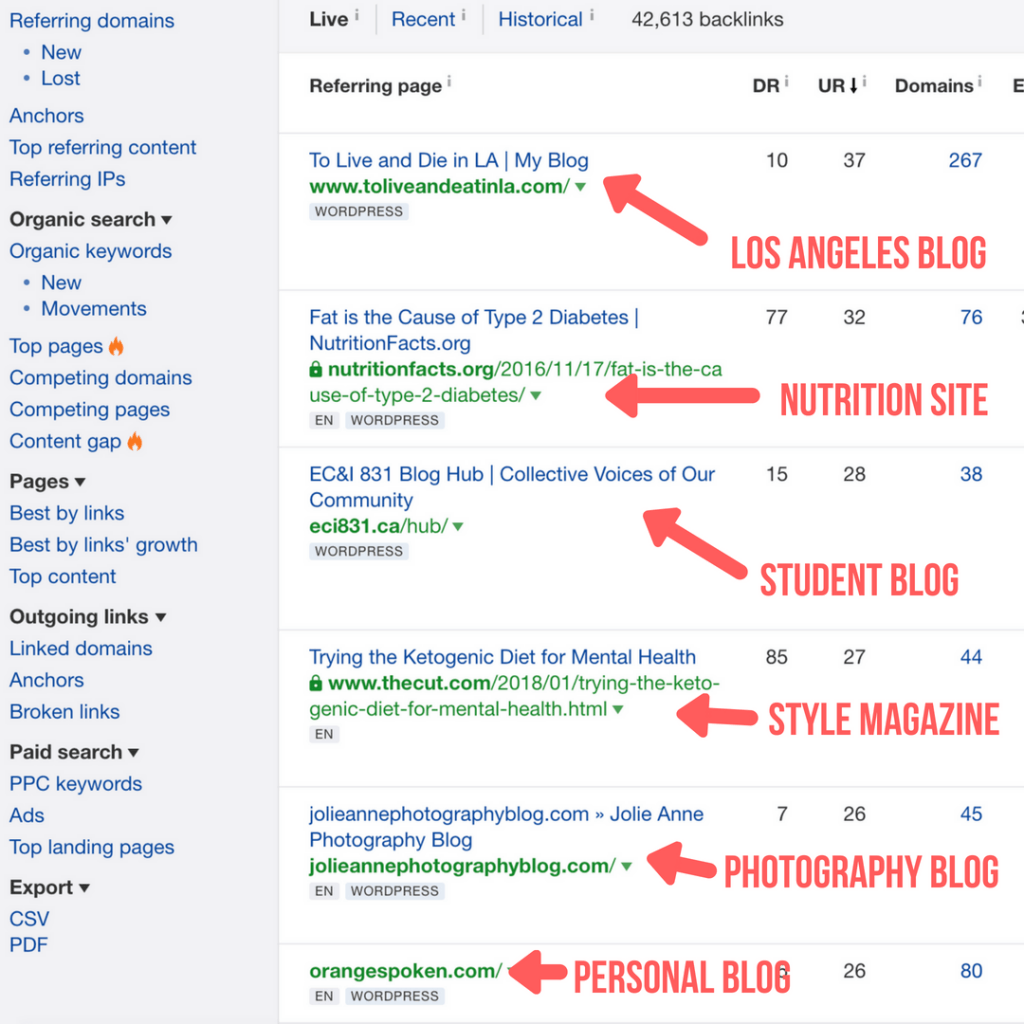
As you can see, the top backlinks for this #1 ranking result are pretty diversified.
It’s very common to have a diverse set of websites linking to you, but the most important thing to look for is the context of the link.
Myth #4 “I need exact match anchors in every link.”
Anchor text makes up a clickable hyperlink [e.g. The HOTH].
Just as you need a diversity of backlink topics, you also want to shoot for a diverse set of anchor text on those sites.
In fact, Google attempted to curb the practice of too many exact match anchors with the Penguin update, but we still see this as a common issue with anchor text over-optimization.
The approach to take for establishing anchor text is to look at the % of each type of anchor text in the top ranking content you are trying to rank for.
You can assume that Google will respond well to those proportions for your backlinks if the topic is similar.
To simplify the concept, you can think about anchor text as 3 major categories:
- Exact match anchors – This is a link that has one of your key phrases in it (e.g. “gluten-free flour”).
- Keyphrases mixed into anchors – These are anchors with your key phrase + words that are not part of the key phrase (e.g. “gluten-free flour from Bob’s Red Mill”)
- Brand, natural and URL anchors – These have no reference to your key phrase unless the key phrase is part of your brand (e.g. “Bob’s Red Mill”)
The % of each category shifts according to Google’s algorithm, but you can find some good general guidelines for how to vary your anchor text in this article.
Looking back at our ketogenic diet example, we see that there is actually a lot of variation in the anchor text:
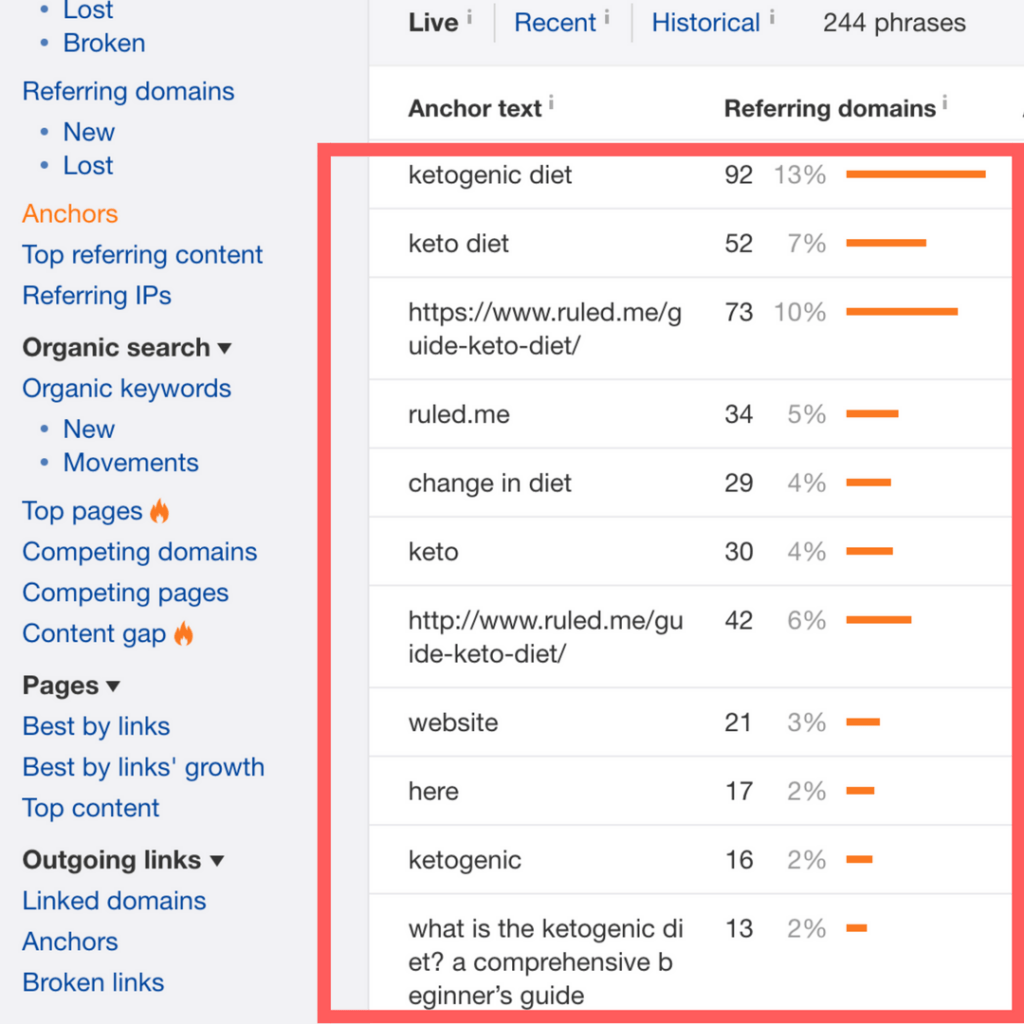
About 50% of the anchors are closely related to the website or the topic. Going down the list though, there are a lot more non-matching anchors pointing to this page:
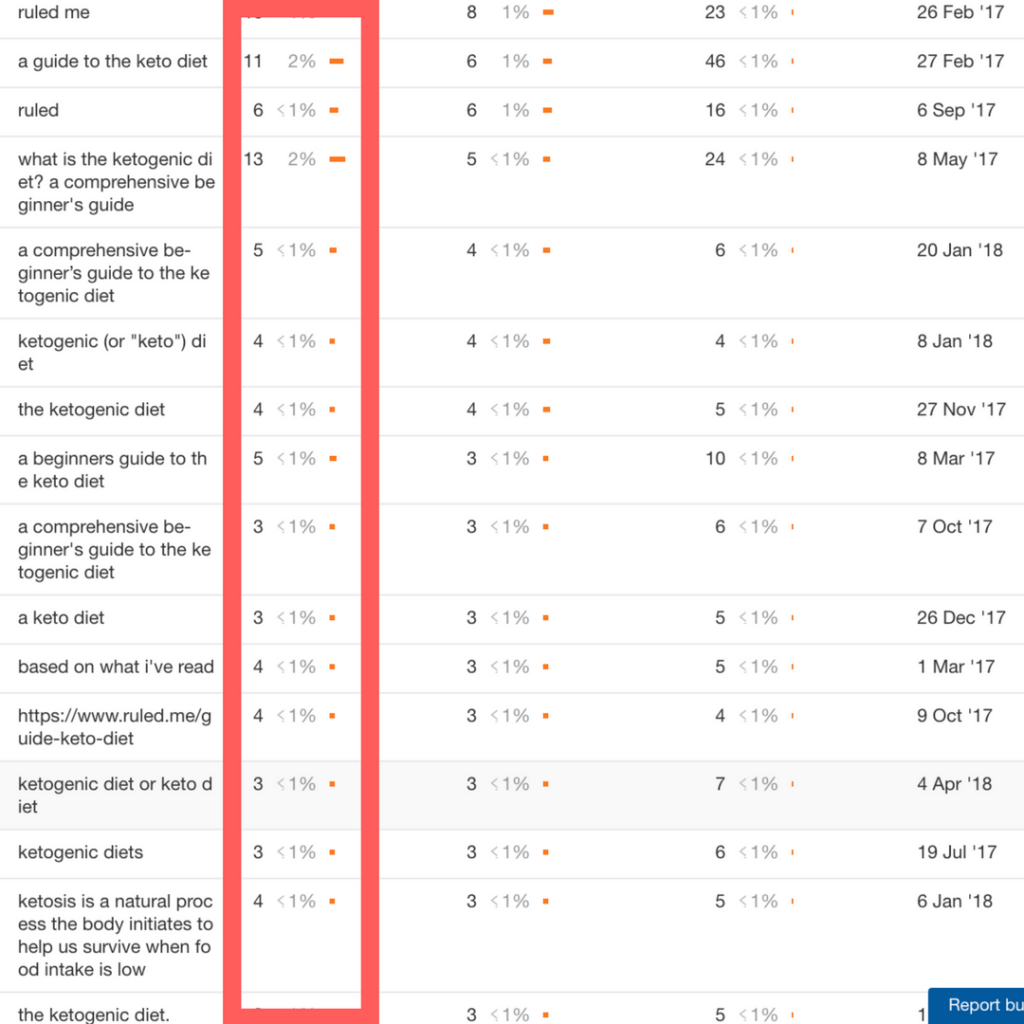
Mimicking the backlink profile of your competition is what we call the “sniper approach” to anchor text.
Instead of guessing, take a look at the backlinks for the websites Google is ranking on page 1 for your keyword, and look at the proportion of different anchor text categories pointing to them.
You can line up your backlink profile with other top-ranked backlink profiles. If you do, you’ll be able to build links rapidly and it will still look natural.
Ready to Rank Fast?
I hope that now you have a much more realistic view of building links.
By taking a more objective and realistic approach to link building, you’ll be able to make an action plan that WILL meet your ranking goals.
Remember: You can find out exactly what you need to do in order to rank by taking the approach in this article.
We’ve cleared up the confusion surrounding these link building myths, but there are a lot more myths out there!
Feel free to leave a comment below with any other link building myths you might have heard so that we can keep reality in check.



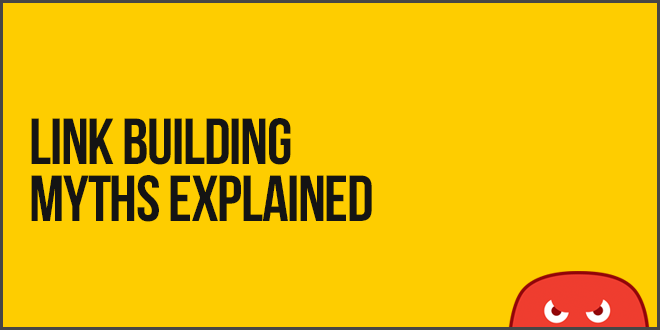

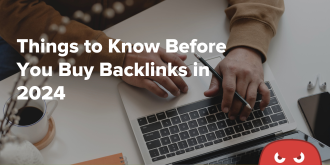



Great article on some link building myths and how to research improvement to our own sites.
Keep up the great work and love articles.
G
Thanks for the kinds words, Gary!
Excellent well written article and very informative that makes a lot of sense, especially breaking down the linking structure of the first page to see how many links you will need to rank on the page for that keyword.
Thank you so much that you are share an good article and all the do follow High Link building share. It’s must be help all SEO expert for their work.I am already follow all your post and try to work them. I hope very soon i see a new good article for your website…
Thanks for this valuable information
A great post! I am struggling to take a site to the #1 for some time, but I didn’t approach still the external link building before, as the competitor has no SEO at all, I thought it would be easy to pass them with only on-page SEO. But i think this post made some points clearer for me and gave me some good ideas to achieve it. Thanks!!
Hi,
I’m in the same boat. I’ve concentrated on excellent onpage optimization as well as publishing informative articles on a dedicated WP blog and on my Shopify store with little results so far. Like you, my competitors have garbage sites but something is making them rank, and I’m assuming it must be backlinks. But the cost for a small niche like mine is extremely high and out of my budget.
Very good article. On Myth No 2, the examples you gave are articles that attracted links viraly, and the links are on topic. What about going out aggressively to acquire hundreds of links (whether bought links or free links) that are from relevant niches and irrelevant niches (without context). Won’t there be problem with Google?
What is the best tool for checking dofollow backlinks?
Nailed it! To add a bit, choose QUALITY links above QUANTITY. A website with 8 quality backlinks will outrank a website with a 100 spammy backlinks. Thanks for teaching me a lot
Thanks Especially about the links not having to be in your niche exactly and not the exact keyword every time
Great to hear we helped you to clarify those things, thanks!
Loved the article! I think the main issue is that anyone starting with SEO expects their website to rank high instantly and that’s not how it goes. It does require a lot of quality and consistent work over a period of a couple of months in order for the ranks to change!
Totally agree Nicole! People want instant results when link building takes time to show results 🙂 I think a lot of people just starting out also assume they can just write SEO optimized content and rank it when really, they need those other links pointing to them.
Hi,
I got to know a lot with this article, this one is literary fantastic and I’ll implement all these with my blog as well.
Thank you so much
Glad you found this post helpful Shivek!
This is very useful information, considering my friend is helping me with this and doing absolutely no good LOL. Thank you for the tutorial!
If you know any aspiring rappers or hip hop artists, tell them to come to me for beats!
See you on top!
http://raygproduction.com/custom-beats-for-sale-2/
Sounds good, and we have a lot more tutorials to increase your SEO knowledge!
Well explained. This will be helpful for all.
Thanks for the kind words on this article, Nishad!
VERY NICE ARTICLE WE NEED MORE ARTICLE
More articles are on the way! Thanks!
Judging by the email I receive, a lot of people believe the myth that automated requests for backlinks are effective. Thanks for setting the record straight on these other myths.
Very true, Michael. Automated backlinks could get some toxic links in the mix that do more harm than good. Best to go natural and try a variety of different link building tactics.
What are your thoughts on paying for backlinks?
It depends on what the links are, it can work but only if you’re paying for good backlinks.
Yes. Variety is very important but it depends on the niche. I work with articles related to sexual health and it is very difficult to get links in this niche that is “almost adult”
That’s true, in that case it might be good to get links from health and wellness type websites since most of those include articles on sexual health and aren’t seen as spammy.
One of the best Article explaining about how to work on ranking in a good way.
In Yoga teacher training keyword. I found people keep on building link without being focused on the niche and within a month tons of artificial links. Never found those sites ranking high and maintaining the ranking. Appreciate the time and efforts to clear doubts of link building.
Thanks for sharing your observation. It’s true, you want relevant links from your niche or one not too far removed from it.
I have to maintain a restaurant equipment website. I really thought making too many links will send wrong signal to google. But the point of getting viral is the right one.
Exactly, too many low quality links is associated with spammy practices, but there is no such thing as “too many” high quality links – you want as many of those as you can get!
I really appreciate this article, its the smartest way to approach link building, with the simplest high impact of the delivery, i followed all the way to the pot of gold, thats the best way to teach, the facts are sold, looking forward to more tips.
Thank you.
Welcome, Ruell!
Thank You Guys so much, its always confusing and disheartening to see that, lot of people speaking about rights and wrongs of SEO but will never explain why their right is right and their wrong is wrong. I am happy that, here in this article i see some practical examples (Screen Shots-for proof), so that now I can work accordingly.
Excellent, happy to help Savan!
Hi,
So in the home based business niche, I thought you had to get links from similar niches.
What are other niches can I accept links from?
Thanks
Think of all the topics related in some way to home-based business: productivity, office furniture, family, etc. Any link from a niche that doesn’t seem entirely irrelevant is fair game, the point is to create a natural backlink profile. “Natural” looks like links from a variety of niches, not necessarily just one niche. For more on this concept check out this post on our blog – https://www.thehoth.com/blog/link-building-myths/
Awesome read this morning. I saw that The HOTH is growing at a good pace. Keep it up guys!
Thanks!
Indeed a lot of myths are being circulated around link building. I come from an animation background and I have seen my clients trying hard to build links from related domains. Mix and match is indeed the best way to build an exhaustive link profile.
Agreed! Natural backlink profiles are very diverse, and vice versa.
Nice read! I definitely learned a lot from this. Thanks for posting!
Excellent article and well written. Thank you. It is very helpful.
Great article. One comment about Myth #2: Though I have never run any experiments, I’ve always suspected that Google may reward content that goes viral quickly since it means it is popular – and we all know Google likes popular. However, I also suspect that if you built the same number of links via another means other than “shares” it can lead to a red flag with Google. It wouldn’t take much for the algorithm to tell the difference between organic, viral growth and an artificially enhanced backlink boom. Perhaps the key is consistent growth without obvious spikes, regardless of the quantity. Just a thought.
Started a blog a few months back, but do not know how to gain quality backlinks!
Working and waiting for quality backlinks.
Awesome read. Some myths are just hyped up fear of what is not clearly known. I would add that a page can also get a ton of backlinks in a short period of time via press release.
You guys are the REAL DEAL!!!
Every email I got from you guys it is like a atomic bomb!!
Really good information guys!!
Thanks for very very useful information. I have a question: is there any risk/penalty if all/almost backlinks are paid backlinks?
Good information with short and sweet these 4 steps are very important for link building.
Well written as well as good explained. Keep up good work.
If a link comes from a site that’s not exactly my niche, I’ll get penalized. That is my doubt now I cleared about this thing thank you so much.
Thank You For Sharing Valuable Information. Really This Was Great And Informative Article. Thank You For Sharing. Personally I Like This Blog Its So Much Helpful For Me.
This is very best information, thanks for sharing nice article and Thank you for the tutorial!
Thanks for the information bro <3
i have a question, is paid link benefit for our website??
This is very most informative information, thanks for sharing nice blog and article. Thank you for the tutorial!
Incredible article! It’s critical to dissipate these fantasies around external link establishment. I can’t help but concur with your focuses on better standards no matter what and the significance of regular, natural connections. In the present Search engine optimization scene, building connections and offering some benefit ought to continuously be at the very front of our techniques.
Thanks for the information on link building.